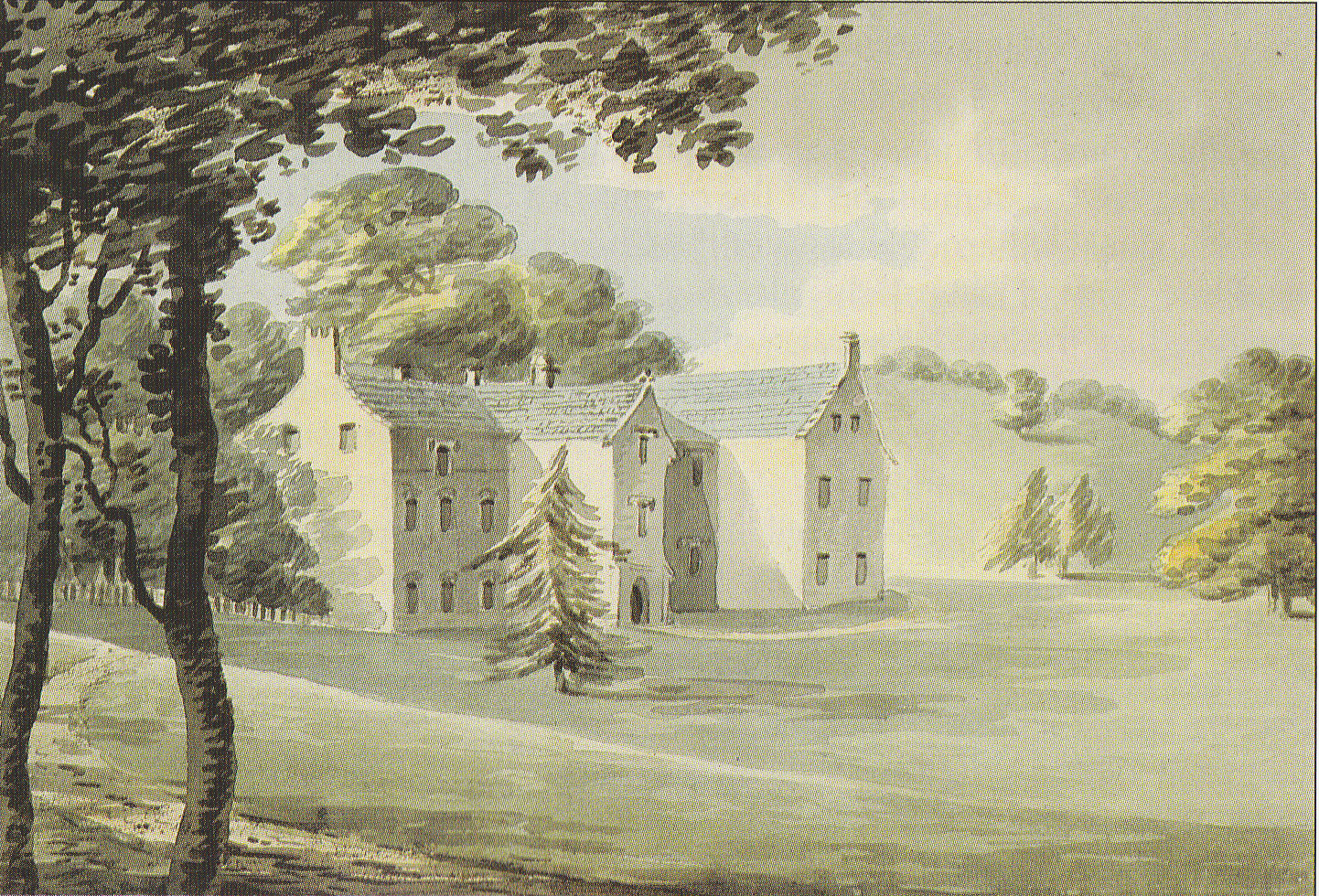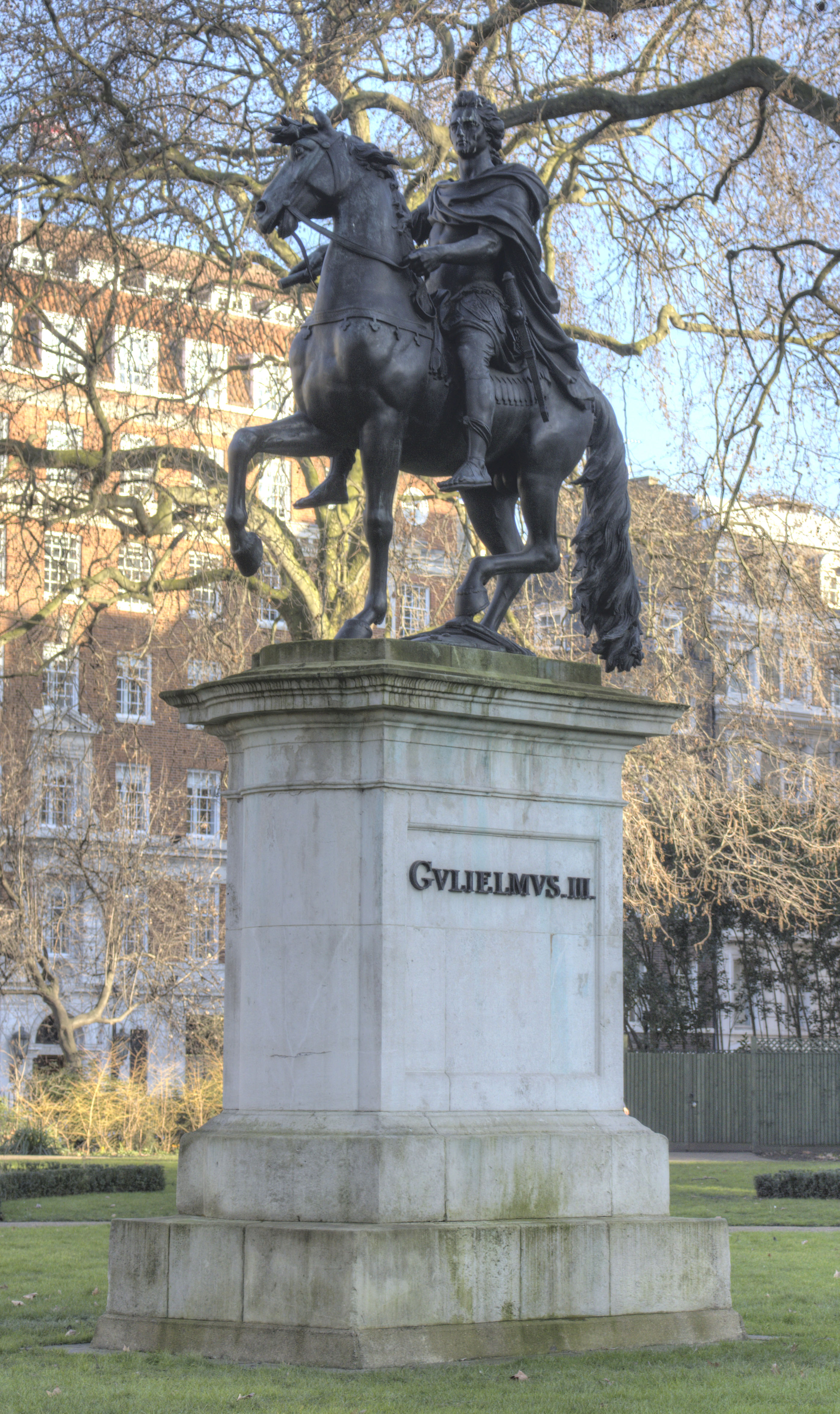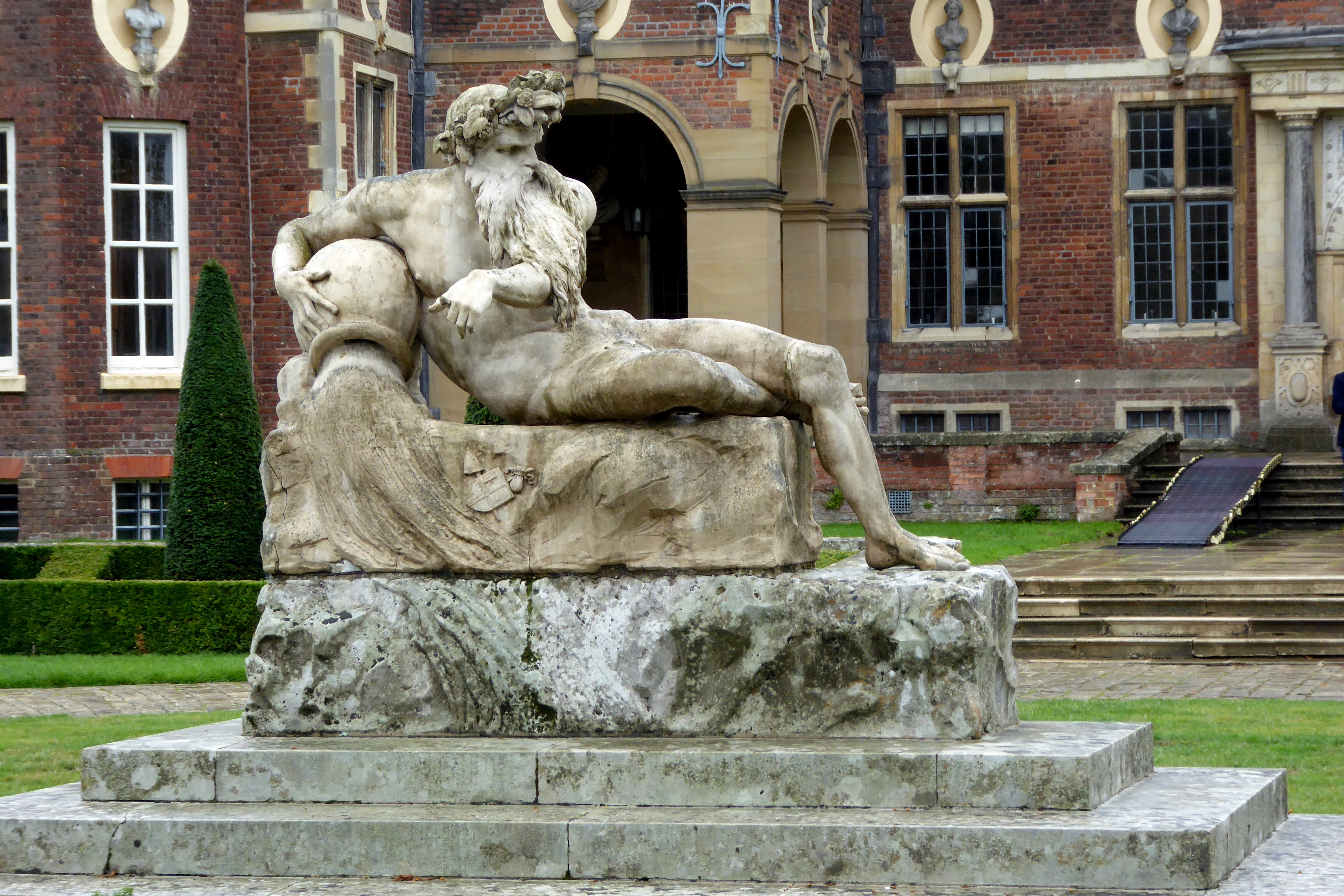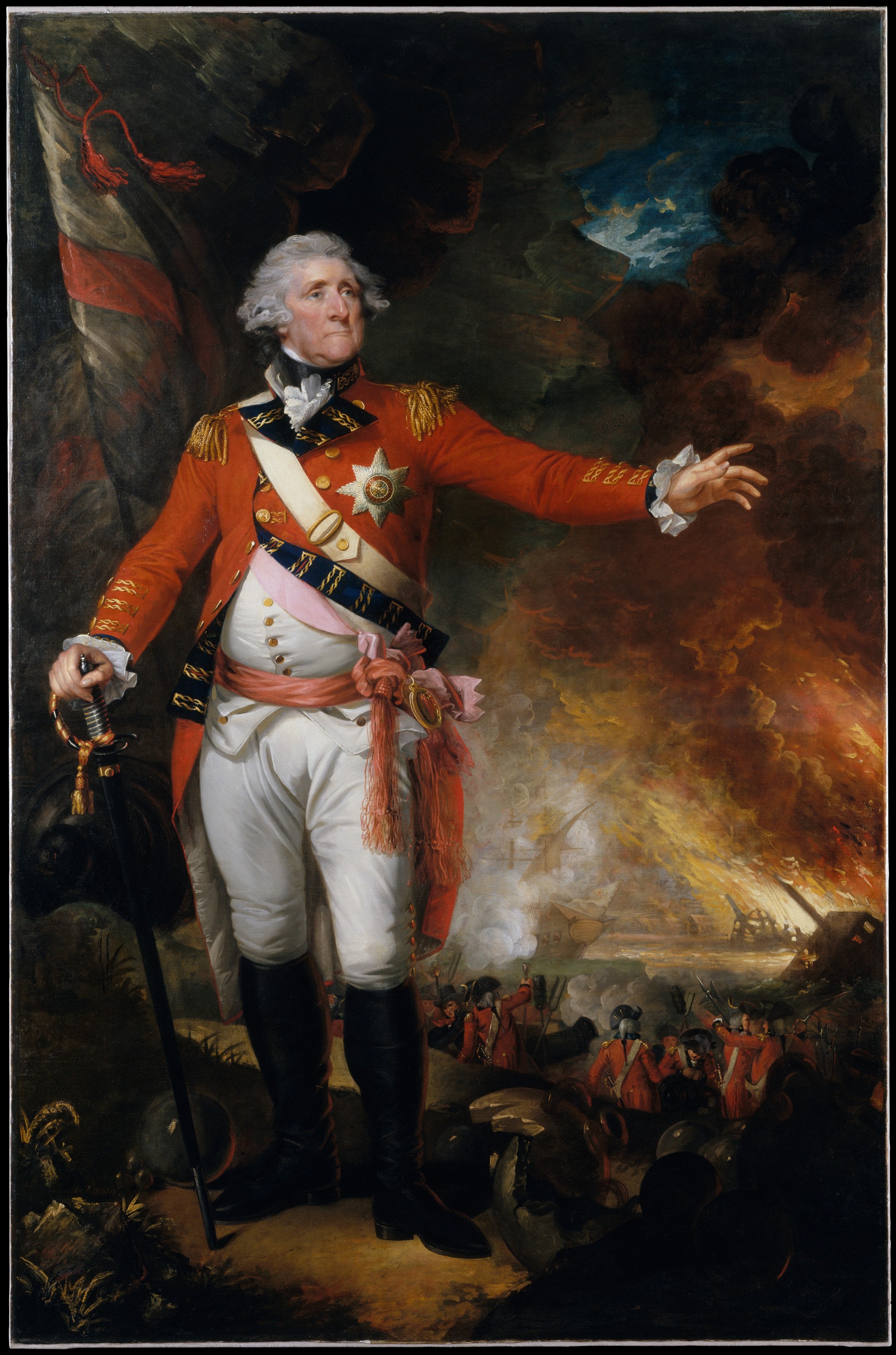|
St Andrew's Church, Buckland Monachorum
St Andrew's Church, Buckland Monachorum is a Grade I listed parish church in the Church of England Diocese of Exeter in Buckland Monachorum, Devon. History The church is medieval, but much was rebuilt in the late 15th century. A restoration was undertaken in 1868-69 under the supervision of Mr. H. Elliott, architect of Plymouth. The west end gallery was removed. The roof was restored. The old pews were replaced with new pews of oak. The medieval bench ends were preserved where possible and new ones carved in a similar style. The walls were plastered, and the windows were re-glazed with plain cathedral glass. A stained glass window by Heaton and Butler was installed at the east end with a representation of the Good Shepherd. The church reopened for worship on Thursday 8 July 1869. The church is noted for the monuments in the Drake aisle. Those to George Augustus Eliott, 1st Baron Heathfield of 1795 and Sir Francis Henry Drake, 5th Baronet of 1794 are by John Bacon Senior. The m ... [...More Info...] [...Related Items...] OR: [Wikipedia] [Google] [Baidu] |
Buckland Monachorum
Buckland Monachorum is a village and civil parish in the West Devon district of Devon, England, situated on the River Tavy, about 10 miles north of Plymouth. In 2006 the neighbourhood had an estimated 1,511 residents and 654 dwellings. The electoral ward of the same name gave a population of 3,380 at the 2011 census. Domesday Book (1086) records Buckland Monachorum (''Bocheland'') as having 46 households, land for 15 ploughs, a salt pan and a fishery. It was in the possession of William de Poilley, one of 17 estates he held in southern Devon as a tenant-in-chief of William the Conqueror. Near to Buckland Monachorum is Buckland Abbey, home of Sir Francis Drake during the Elizabethan era. The village is the site of St Andrew's, a 12th-century church with a Saxon The Saxons ( la, Saxones, german: Sachsen, ang, Seaxan, osx, Sahson, nds, Sassen, nl, Saksen) were a group of Germanic * * * * peoples whose name was given in the early Middle Ages to a large country (Old Saxon ... [...More Info...] [...Related Items...] OR: [Wikipedia] [Google] [Baidu] |
Sir Francis Henry Drake, 5th Baronet
Sir Francis Henry Drake, 5th Baronet (29 August 1723 – 19 February 1794) was an English Master of the Household and Member of Parliament. He was born the eldest son of Sir Francis Drake, 4th Baronet, whom he succeeded in 1740. He was educated at Winchester School (1734–39), Eton College (1740) and Corpus Christi College, Cambridge 1740–44. He then studied law at Lincoln's Inn (1740). He was a Ranger of Dartmoor Forest for life from 1752. He served as a Clerk of the Green Cloth from 1753 to 1770, rising from second clerk comptroller to first clerk and then as Master of the Household from 1771 to his death. He represented Bere Alston as a Member of Parliament from 1747 to 1771 and from 1774 to 1780. He lived at Nutwell Court on the south coast of Devon. He was said by Hoskins (1954) "to have wrecked the fine medieval house with his ''improvements'' demolishing the two-storied gatehouse with great difficulty in 1755-6 and cutting through the timbered roof of the 14th centu ... [...More Info...] [...Related Items...] OR: [Wikipedia] [Google] [Baidu] |
Dove's Guide For Church Bell Ringers
''Dove's Guide for Church Bell Ringers'' (known to ringers as ''Dove's Guide'' or simply ''Dove'') is the standard reference to the rings of bells hung for English-style full circle ringing. The vast majority of these "towers" are in England and Wales but the guide includes towers from the rest of the British Isles as well as a few from around the world (including the United States, Australia, Canada, Africa and New Zealand). The latest edition is ''Dove’s Guide for Church Bell Ringers to the Rings of Bells of the World'' (11th Edition). History The guide was first published in 1950 by Ronald Hammerton Dove (1 June 1906 – 19 March 2001) under the title ''A Bellringer's Guide to the Church Bells of Britain and Ringing Peals of the World''. Previously the location of rings of bells was a matter only of local knowledge and hearsay. Dove produced eight editions of his guide between 1950 and 1994, managing to visit and ring at nearly all the ringable towers himself (a never- ... [...More Info...] [...Related Items...] OR: [Wikipedia] [Google] [Baidu] |
Hele & Co
Hele & Co (also known as Hele & Sons) were the main organ builders in the south west of England from 1865 to 2007.''The Freeman-Edmonds Directory of British Organ Builders''; by Andrew Freeman & Bernard Edmonds. 2002 History The company was founded by George Hele (1836–1919). Initially George concentrated on selling organs, pianos and harmoniums, but in 1865 he started work in Truro building his first instrument, an organ for Devoran Wesleyan Methodist Chapel. On 12 June 1859 at Stoke-Damerel he married Mary Ann Calvert (1835-1919). In 1870 he moved to Plymouth where the company was based until 2007. During the early years of the twentieth century Hele & Co. expanded, building organs for many churches in the locality. After the Second World War, J. W. Walker & Sons Ltd took a controlling interest which lasted for several years. After regaining independence, the company continued, but in 2007 it merged with The Midland Organ Company under a new name, Midland Organ Hele an ... [...More Info...] [...Related Items...] OR: [Wikipedia] [Google] [Baidu] |
Thomas Fuller-Eliott-Drake
Sir Thomas Trayton Fuller-Eliott-Drake, 1st Baronet (1785–1870) was a British Army officer. The Fuller-Eliott-Drake Baronetcy, of Nutwell Court, Devon, was created in the Baronetage of the United Kingdom on 22 August 1821 for Thomas Fuller-Eliott-Drake, grandson of the first Lord Heathfield, and grand-nephew of the last Drake baronet of Buckland. Originally surnamed simply Fuller, the first baronet had adopted the additional surnames Eliott and Drake upon his inheritance of Buckland Abbey and Nutwell Court from the second Lord Heathfield in 1813. He was succeeded by his nephew Francis George Augustus Fuller. Fuller-Elliot-Drake was an officer in the 52nd (Oxfordshire) Regiment of Foot, joining in 1804, and serving under Sir John Moore during the 1808 expedition to Sweden, and in the Battle of Corunna. Serving in the Walcheren Expedition in 1809, Fuller-Elliot-Drake returned to the Peninsula, where he was present at the Battles of Sabugal, Fuentes d'Onor, Ciudad Rodrigo ... [...More Info...] [...Related Items...] OR: [Wikipedia] [Google] [Baidu] |
Pipe Organ In St Andrew's Church, Buckland Monachorum
Pipe(s), PIPE(S) or piping may refer to: Objects * Pipe (fluid conveyance), a hollow cylinder following certain dimension rules ** Piping, the use of pipes in industry * Smoking pipe ** Tobacco pipe * Half-pipe and quarter pipe, semi-circular ramps for performing skateboarding/snowboarding tricks * Piping (sewing), tubular ornamental fabric sewn around the edge of a garment * ''For the musical instruments'', see below Music * Pipe (instrument), a traditional perforated wind instrument * Bagpipe, a class of musical instrument, aerophones using enclosed reeds ** Pipes and drums or pipe bands, composed of musicians who play the Scottish and Irish bagpipes * Organ pipe, one of the tuned resonators that produces the main sound of a pipe organ * Pan pipes, see Pan flute, an ancient musical instrument based on the principle of the stopped pipe * Piped music, or elevator music, a type of background music * "Pipe", by Christie Front Drive from ''Christie Front Drive'', 1994 Computing * ... [...More Info...] [...Related Items...] OR: [Wikipedia] [Google] [Baidu] |
Richard Westmacott
Sir Richard Westmacott (15 July 17751 September 1856) was a British sculptor. Life and career Westmacott studied with his father, also named Richard Westmacott (the elder), Richard Westmacott, at his studio in Mount Street, off Grosvenor Square in London before going to Rome in 1793 to study under Antonio Canova. Westmacott devoted all his energies to the study of classical sculpture, and throughout his life his real sympathies were with pagan rather than with Christian art. Within a year of his arrival in Rome he won the first prize for sculpture offered by the Accademia di Belle Arti di Firenze, Florentine Academy of Arts, and in the following year he gained the papal gold medal awarded by the Accademia di San Luca, Academy of St Luke with his bas-relief of Joseph (Genesis), Joseph and his brothers. On returning to England in 1797, he set up a studio, where John Edward Carew and Musgrave Watson gained experience. Westmacott had his own foundry at Pimlico, in London, whe ... [...More Info...] [...Related Items...] OR: [Wikipedia] [Google] [Baidu] |
John Bacon (sculptor, Born 1777)
John Bacon (1777–1859), also known as John Bacon the Younger, or Junior, to distinguish him from his equally famous father, was an English sculptor. Biography Bacon was the second son of the sculptor John Bacon and his wife Elizabeth Wade. He was born at his parents' home in Newman Street in the City of Westminster on 13 March 1777. He entered the Royal Academy Schools at the age of twelve, one of the youngest pupils ever admitted. At fifteen, Bacon exhibited his first work; at sixteen, he was awarded the silver medal of the Royal Academy; and in 1797 he won the gold medal for his statue of Cassandra. His brother Thomas Bacon also exhibited at the Royal Academy between 1793 and 1795. Their father died in 1799, and the younger John Bacon succeeded to his business. He finished such works as he found in progress, including the well-known statue of Lord Cornwallis, and managed to secure ample patronage for himself. He ceased to exhibit at the academy in 1824. Building projects ... [...More Info...] [...Related Items...] OR: [Wikipedia] [Google] [Baidu] |
Francis Augustus Eliott, 2nd Baron Heathfield
General Francis Augustus Eliott, 2nd Baron Heathfield (31 December 1750 – 26 January 1813) was a senior British Army officer. Military career Heathfield was a soldier who served as lieutenant-colonel of the 6th (Inniskilling) Dragoons. He largely demolished Nutwell, the family home, and built in its place a neo-classical house faced with tiles imitating Portland stone, an undertaking which he completed c.1800. He was colonel of the 1st King's Dragoon Guards from 1810 until his death in 1813 and served as a lord of the bedchamber under George IV George IV (George Augustus Frederick; 12 August 1762 – 26 June 1830) was King of the United Kingdom of Great Britain and Ireland and King of Hanover from the death of his father, King George III, on 29 January 1820, until his own death ten y ... from 1812 until his death. He did not marry, had no children and the barony became extinct when he died. References Sources *Gray, Todd & Rowe, Margery (Eds.), Travels in Georgian Devon ... [...More Info...] [...Related Items...] OR: [Wikipedia] [Google] [Baidu] |
John Bacon (sculptor, Born 1740)
John Bacon (24 November 1740 – 7 August 1799) was a British sculptor who worked in the late 18th century. Bacon has been reckoned the founder of the British School of sculpture. He won numerous awards, held the esteem of George III, and examples of his works adorn St Paul's Cathedral and Westminster Abbey in London, Christ Church, Oxford, Pembroke College, Oxford, Bath Abbey and Bristol Cathedral. Biography John Bacon was born in Southwark on 24 November 1740, the son of Thomas Bacon, a clothworker whose family had formerly held a considerable estate in Somersetshire. At the age of fourteen, John was apprenticed to Mr Crispe's porcelain manufactory at Lambeth, where he was at first employed in painting small ornamental pieces of china. He was swiftly promoted to modeller and used the additional income to support his parents, then in straitened circumstances. Observing the models sent by different eminent sculptors to be fired at the adjoining pottery kiln dete ... [...More Info...] [...Related Items...] OR: [Wikipedia] [Google] [Baidu] |
George Augustus Eliott, 1st Baron Heathfield
George Augustus Eliott, 1st Baron Heathfield, (25 December 1717 – 6 July 1790) was a British Army officer who served in three major wars during the eighteenth century. He rose to distinction during the Seven Years' War when he fought in Germany and participated in the British attacks on Belle Île (France) and Cuba. Eliott is most notable for his command of the Gibraltar garrison during the Great Siege of Gibraltar, which lasted from 1779 and 1783, during the American War of Independence. He was celebrated for his successful defence of the fortress and decisive defeat of Spanish and French attackers. Life Early life Eliott was born at Wells House, near Stobs Castle, Roxburghshire, the 10th (and 8th surviving) son of Sir Gilbert Eliott, 3rd Baronet, of Stobs, by his distant cousin Eleanor Elliot of Brugh and Wells in Roxburghshire. Eleanor's brother was the soldier and courtier William Elliot of Wells. One of his Eleanor's sisters, Charlotte, had married Roger Elliott, anoth ... [...More Info...] [...Related Items...] OR: [Wikipedia] [Google] [Baidu] |
England
England is a country that is part of the United Kingdom. It shares land borders with Wales to its west and Scotland to its north. The Irish Sea lies northwest and the Celtic Sea to the southwest. It is separated from continental Europe by the North Sea to the east and the English Channel to the south. The country covers five-eighths of the island of Great Britain, which lies in the North Atlantic, and includes over 100 smaller islands, such as the Isles of Scilly and the Isle of Wight. The area now called England was first inhabited by modern humans during the Upper Paleolithic period, but takes its name from the Angles, a Germanic tribe deriving its name from the Anglia peninsula, who settled during the 5th and 6th centuries. England became a unified state in the 10th century and has had a significant cultural and legal impact on the wider world since the Age of Discovery, which began during the 15th century. The English language, the Anglican Church, and Engli ... [...More Info...] [...Related Items...] OR: [Wikipedia] [Google] [Baidu] |






